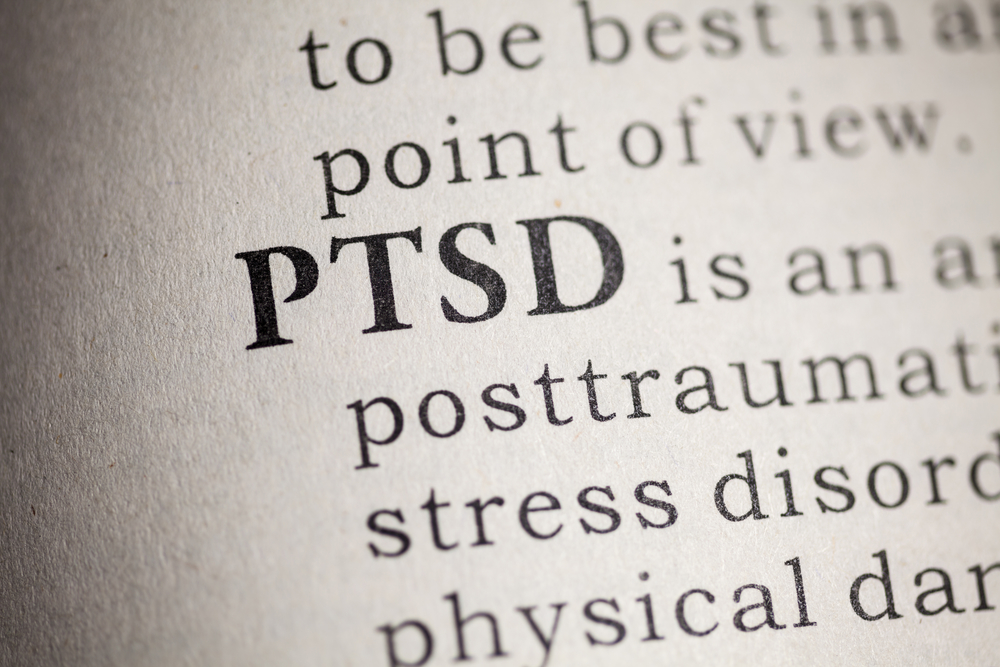What is Posttraumatic Stress Disorder?
PTSD is a psychological and emotional stress disorder that causes someone to believe that they are unable to cope with the demands placed on their inner world. It is a negative perception of highly stressful or traumatic situations that manifests itself through emotional and physical symptoms.

What is PTSD?
PTSD (Posttraumatic Stress Disorder) is essentially an anxiety disorder. It develops in response to traumatic or life-threatening experiences such as war, sexual assault, accidents, or natural disasters.
Some symptoms of PTSD include:
- Emotional Symptoms: anxiety, anger, depression, irritability, sadness
- Physical Symptoms: tiredness, increased perspiration, high or low blood pressure, trouble digesting food
Stress affects our autonomic nervous system, endocrine system, and immune system; these physical systems are all interdependent on each other. How we perceive stress plays an important role in how our bodies respond physically to stress.
High amounts of inflammatory hormones are dumped into our systems in response to stressful or traumatic situations, but these hormones are released even at the memory of trauma. So PTSD can be thought of as an emotional stress overload.
In fact, the latest research shows that PTSD actually causes a part of the brain called the amygdala to shrink. The amygdala is the part of the brain that processes emotions and fear. Researchers believe that when the amygdala is smaller, it makes it more difficult for people to process their anxiety resulting from trauma.
Who Suffers From PTSD?
Posttraumatic stress disorder was first clinically observed during the Civil War and gained additional notice during World War I. However, it wasn’t officially recognized by the American Psychiatric Association until 1980. Today, we understand a great deal more about PTSD. The research surrounding this mental illness, its causes, and its treatments is robust.
According The National Center for PTSD (a division of the US Department of Veteran Affairs), roughly 5% of men and 10% of women living in the United States will develop PTSD at some point during their lifetime. This accounts for 6-7 million adults in the United States today that suffer from PTSD, but even children can develop PTSD. This number is expected to rise due to the increasing unrest in our world today. Most individuals show early symptoms of PTSD shortly after experiencing a traumatic event, but there can be a delayed PTSD reaction months or even years later.
Instances of posttraumatic stress disorder dramatically increases among our military: up to thirty percent of women or men in active war zones go on to develop PTSD. Rates of PTSD among the military vary depending on circumstances such as:
- what branch of the military they served in
- whether or not they saw active combat
- if they were enlisted or an officer
- whether or not they experienced sexual assault while in the military
PTSD Statistics
People in the United States suffer from PTSD
%
of people with PTSD will never reach out for professional help
%
of adults have experienced at least one traumatic life event
%
of all adults who experience at least one traumatic event will suffer from PTSD
%
of adults (1 in 13) will develop PTSD
%
of all women will develop PTSD
Military personnel serving in the Army or Marines have a 4x greater rate of PTSD than those serving with the Navy or Air Force
PTSD among enlisted military is double that of the officers
%
of people who have been in a war zone will develop PTSD
How Does PTSD Develop?
Posttraumatic stress disorder always begins with a traumatic, life-threatening event that someone experiences, observes, or even learns about. Because of this event, they feel extreme horror, fear, or helplessness.
Many people can go on to recover from the trauma, but some people find they lose the ability to cope with their everyday lives because of the traumatic experience, but most people are able to recover from PTSD with the right help.
One person put their feelings after a terrible event this way: “I wasn’t there for anyone anymore — it was like I had checked out, emotionally. I went through the motions every day, but didn’t really feel anything or want to be around anyone. I couldn’t focus. Hours would pass with nothing done. And I know my family saw it, I know they felt the void. I think this hurt everyone around me, which made me feel even worse. I knew something was very, very wrong with me, I just didn’t know what. And I didn’t know what to do about it.”
When an individual feels like this for at least one month, there is a good chance that they have PTSD and should seek professional help. PTSD is a common, yet serious, health condition.
What is Complex PTSD?
Some people with PTSD suffer from symptoms through their lifetime due to prolonged exposure to trauma that results in systemic, hormonal changes to the brain’s chemistry. This is also known as Complex PTSD, or extreme stress. Symptoms of Complex PTSD don’t always completely disappear and managing a recovery can be a lengthy process.
Complex PTSD is especially common in people who suffered childhood abuse, sexual abuse, or neglect. These events can have devastating consequences on their emotions, memories, and learning abilities. It can also later contribute to PTSD and substance abuse, eating disorders, unacceptable sexual actions, and other behavioral problems. People with Complex PTSD can also suffer from other anxiety disorders such as depression, panic, amnesia, personality disorders, or disassociation, among others.
